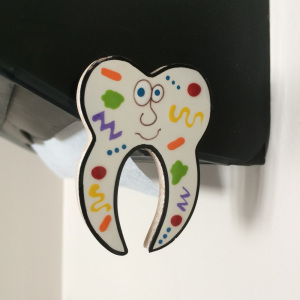
Restorative Dentistry
There are times when Dr. Cook will need to restore your teeth due to decay, fractures, abscess (infection), abrasion, and acid wear. Here are options that we offer to fit your budget and diagnosis.
Composite Restorative (filling)
 Ultimately, the best dental filling is no dental filling. Dr. Cook’s team believes that prevention is the best medicine. You can dramatically decrease your risk of cavities and other dental diseases simply by brushing twice a day, flossing daily, eating a balanced diet, and visiting us regularly.
Ultimately, the best dental filling is no dental filling. Dr. Cook’s team believes that prevention is the best medicine. You can dramatically decrease your risk of cavities and other dental diseases simply by brushing twice a day, flossing daily, eating a balanced diet, and visiting us regularly.
When a tooth does need to be filled or restored, Dr. Cook uses composite resins, or tooth-colored fillings to provide good durability and resistance to fractures in small-to-mid-size fillings that need to withstand moderate pressure from the stress of chewing. They can be used on either front or back teeth. Tooth-colored restorative fillings are a good choice for people who want their fillings to look natural.
Crown
Dr. Cook may recommend a crown as a restoration to strengthen or improve the appearance of a tooth. Crowns are placed for a variety of reasons: when there isn’t enough tooth remaining to provide support for large fillings, to cover badly shaped or discolored teeth, restore fractured teeth, protect weak teeth from fracturing (such as a tooth that has had a root canal), and attach bridges or cover implants. Crowns can be either a full-cast alloy crown in gold or a have a tooth-colored porcelain cover, which we can match perfectly to your natural tooth color.
Root Canal
Your natural teeth are meant to last a lifetime. Good daily home care habits and regular dental cleanings and exams will help keep your teeth healthy.
There are times, however, when a tooth is injured or infected, that Dr. Cook may recommend a root canal to save the tooth. With a root canal, the tooth can provide years of service similar to nearby teeth that have not been treated. We recommend that a tooth with a root canal also have a crown placed over it to strengthen and improve the appearance of the tooth.
Fixed Bridge
Dr. Cook will recommend a fixed bridge when one or more teeth have been lost. A fixed bridge consists of a pontic and usually two abutting teeth. A pontic or bridge exists in the area where teeth are missing. Two crowns or abutments are placed on the teeth on either side of the pontic. The fixed bridge is typically made out of a porcelain fused to metal and then cemented in place. It can be removed only by a dentist. Bridges function like natural teeth and can be a cost-effective method for providing support to an area with one or more missing teeth.
Implants
Dental implants are an effective way to replace missing teeth. Many people choose dental implants for one or more teeth. Implants are titanium posts surgically placed in the upper or lower jawbone. They replace the root of one or more missing teeth. Dr. Cook will refer you out for an implant if needed. After your implant is in place, Dr. Cook will see you to place a crown on the implant

